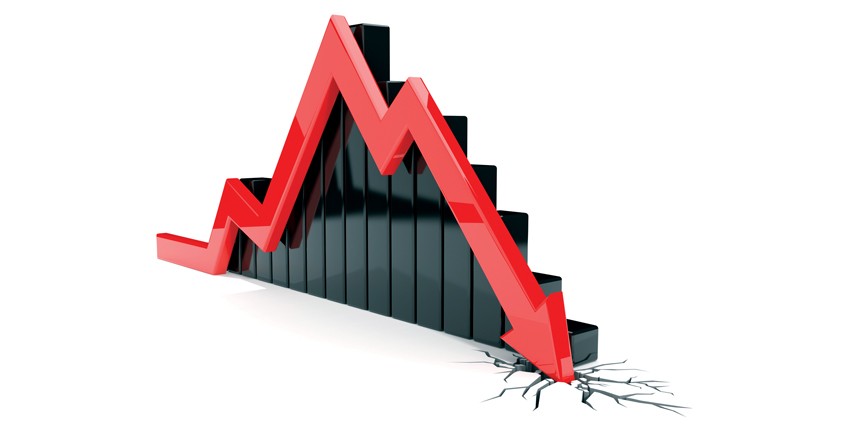The global economy is churning full-steam ahead. The World Bank predicted global growth would exceed 3 percent in 2018, and developing markets’ growth would reach 4.5 percent in 2018 and 4.7 percent in 2019. The U.S. economy, meanwhile, is entering a nearly unprecedented 10th year of expansion.
For many, sustained buoyancy means finally putting fears of long-term sluggish growth or another bust to rest. But smart executives do not put blinders on when the going is good. Instead, they recognize that history says we are overdue for a downturn. “Someone once asked me, ‘What are the odds for the next recession?’ Jamie Dimon, CEO of JPMorgan Chase, told Bloomberg TV in May. “I said it’s 100 percent.”
There is no shortage of risks that could trigger the next downturn: trade wars between the U.S. and China, Canada and Europe; a euro crisis fueled by populist governments in Italy and other European countries; and China’s ever-rising debt. Though the International Monetary Fund has projected robust GDP growth of 3.9 percent for 2019, its leaders warned in a July report that “the expansion is becoming less even, and risks to the outlook are mounting.”
What goes up must eventually come down. This reality is frightening for businesses of any size. An average of more than half a million businesses have failed in the U.S. during each of the 10 recessions that occurred between the end of World War II and the Great Recession, according to business administration professors Steve Michael of the University of Illinois and his research partner, John Pearce of Villanova University.
Given the challenges of identifying a recession before or even as it hits, prudent leaders work ahead, leveraging the fruits of good years to build the resiliency required to push through future economic famines. A key factor in the ability to do so is to establish a proactive company culture around risk management, argue Howard Kunreuther and Michael Useem, both of the University of Pennsylvania’s Wharton School.
In their book, Managing Catastrophic Risk: How Companies Are Coping With Disruption, Dr. Kunreuther and Dr. Useem underscore the importance of deliberative rather than intuitive thinking in the period before trouble emerges. “There is a tendency to misperceive the risk by underestimating it prior to a disaster and overestimating it afterward,” they write. To counteract that human tendency, corporations must undertake a careful risk assessment before the economy shows signs of turning, and then develop and apply a risk management strategy to many different scenarios.
Dangerous Defense Mechanisms
Even a decade ago, monitoring risk may not have been at the top of senior leadership’s or corporate boards’ agendas. But as American companies learned the hard way in the wake of the 2008 financial meltdown, disengaged corporate boards were a major reason very few saw the crisis coming.
For a case in point, Dr. Kunreuther and Dr. Useem point to American International Group (AIG). As the insurance company grew into the world’s largest insurer, regulators began to warn in the mid-2000s that AIG’s high-flying financial products group, with a portfolio chock-full of credit default swaps on subprime mortgages, looked increasingly shaky. The U.S. Office of Thrift Supervision, in fact, told AIG directors in 2005 that it had found weaknesses in documentation, accounting, stress-testing and communication of risk tolerance. Still, two years later, AIG’s chief risk officer called the danger of the credit default swaps “very modest and remote.”
“The biggest factor in successfully planning for crises, bar none, is corporate culture—and particularly the psychological makeup of the executives.”
—Ian Mitroff, professor emeritus, University of Southern California
Fast-forward to the following year, and AIG lost $61 billion in three months, the biggest quarterly loss of any company in American business history. In their book, Dr. Kunreuther and Dr. Useem argue that “AIG’s revenue growth and earnings success in the years running up to the 2008 debacle fostered a boardroom assurance that shaded into hubris.”
Ian Mitroff, an organizational theorist and professor emeritus at the University of Southern California’s Marshall School of Business, agrees with that diagnosis. “The biggest factor in successfully planning for crises, bar none, is corporate culture—and particularly the psychological makeup of the executives,” Share on X he says. “Many are not prepared because Freudian defense mechanisms have corporate counterparts.”
Dr. Mitroff is referring to the subconscious mechanisms identified by Sigmund Freud that people employ to feel better in the face of problems. The biggest one that applies to leaders of high-flying companies? “Denial,” he says. “Some organizations are so full of denial they’re set up to fail.”
Keep Probing
When it comes to denial’s hold on a C-suite and a company’s ability to prepare for future downturns, there is an important distinction between “crisis-prone” and “crisis-prepared” leaders, according to Dr. Mitroff.
Crisis-prone leaders, he says, focus on rationalizations to a faulty belief that another economic downturn will somehow leave them unscathed. They are not in denial that another downturn will happen, necessarily. But through mental gymnastics, they are able to convince themselves that the organization is strong enough or nimble enough to navigate the dip without breaking its stride.
Crisis-prepared leaders, by contrast, “constantly probe themselves and their organizations for dangerous mindsets that prevent them from preparing for worst-case scenarios,” he says. That constant self-reflecting and self-testing makes the organization stronger—because it means executives are identifying weak seams and reinforcing them before they are stress-tested by outside (and often brutal) economic forces.
To prevent AIG-style folly, then, today’s corporate leaders must actively combat tendencies to deny future troubles and instead get serious about risk management. Research has shown that front-line managers are better at recognizing emerging risks than C-level executives, so a company’s risk management team should combine professionals from different tiers of the organization who can speak to current factors that may portend disaster.
Cash Is King
Beyond committing to robust risk management, companies today can take concrete steps to gird against an inevitable downturn, according to Dr. Michael and Dr. Pearce, who wrote a seminal paper on managing effectively through a recession.
First: In boom times, they say, companies should create varied product lines and position themselves in different geographic markets with multiple customer bases. One might think that spreading an organization so thin would leave it vulnerable or resource-strapped in times of economic crisis but, Dr. Michael and Dr. Pearce argue this diversification will actually help because a recession hits certain industries and areas of the country harder than others.
Doing so also creates cash flow that can be squirreled away. In a 2013 interview with the Urban Land Institute, Jeff Hines, the founder of the Houston-based real estate development giant that bears his name, reiterated the importance of building up cash reserves when times are good. “One thing we’ve always done is that we’ve focused less on profitability and more on cash,” Mr. Hines says. “Liquidity is king in this business.” Having adequate cash on hand allows a company to continue with operations when times are tight—and then re-enter the market quickly afterward.
While cash-strapped companies might be forced to take a short-term view during an economic downturn—when financing tightens and cash flow slows to a trickle—those with padded coffers are in a better position to maintain the long lens. That can mean less stress during the downturn, but also being better able to seize whatever opportunities arise during and immediately after the downturn has lifted. “Recessions don’t last forever,” Dr. Michael says. “During them, well-capitalized companies can find bargains and pick up assets in fire sales.”
“Many people think of a recession as a pronouncement from on high. But the honest truth is that most are identified in the rearview mirror.”
—Steve Michael, business administration professor, University of Illinois
But scrutinizing sales when business is going gangbusters is not a natural instinct for many—it is a habit that flows from a consciously cultivated mindset. Preparing for worst-case scenarios when times are good ties back to psychology. “The biggest enemy we face in any crisis is denial and anxiety,” Dr. Mitroff says. “The only thing we know for sure is that being prepared helps the bottom line.”
Second, echoing the importance of risk management and careful planning, Dr. Michael and Dr. Pearce urge companies to carefully watch for sales dips that may foreshadow a recession. “Many people think of a recession as a pronouncement from on high—an extremely discrete event—but the honest truth is that most are identified in the rearview mirror,” Dr. Michael says. “Business cycle downturns aren’t necessarily easy to see as they’re happening.” Keeping close watch over sales figures even during boom times allows executives to better feel the early tremors of a looming downturn—and adjust accordingly.
But scrutinizing sales when business is going gangbusters is not a natural instinct for many—it is a habit that flows from a consciously cultivated mindset. Preparing for worst-case scenarios when times are good ties back to psychology. “The biggest enemy we face in any crisis is denial and anxiety,” Dr. Mitroff says. “The only thing we know for sure is that being prepared helps the bottom line.”







